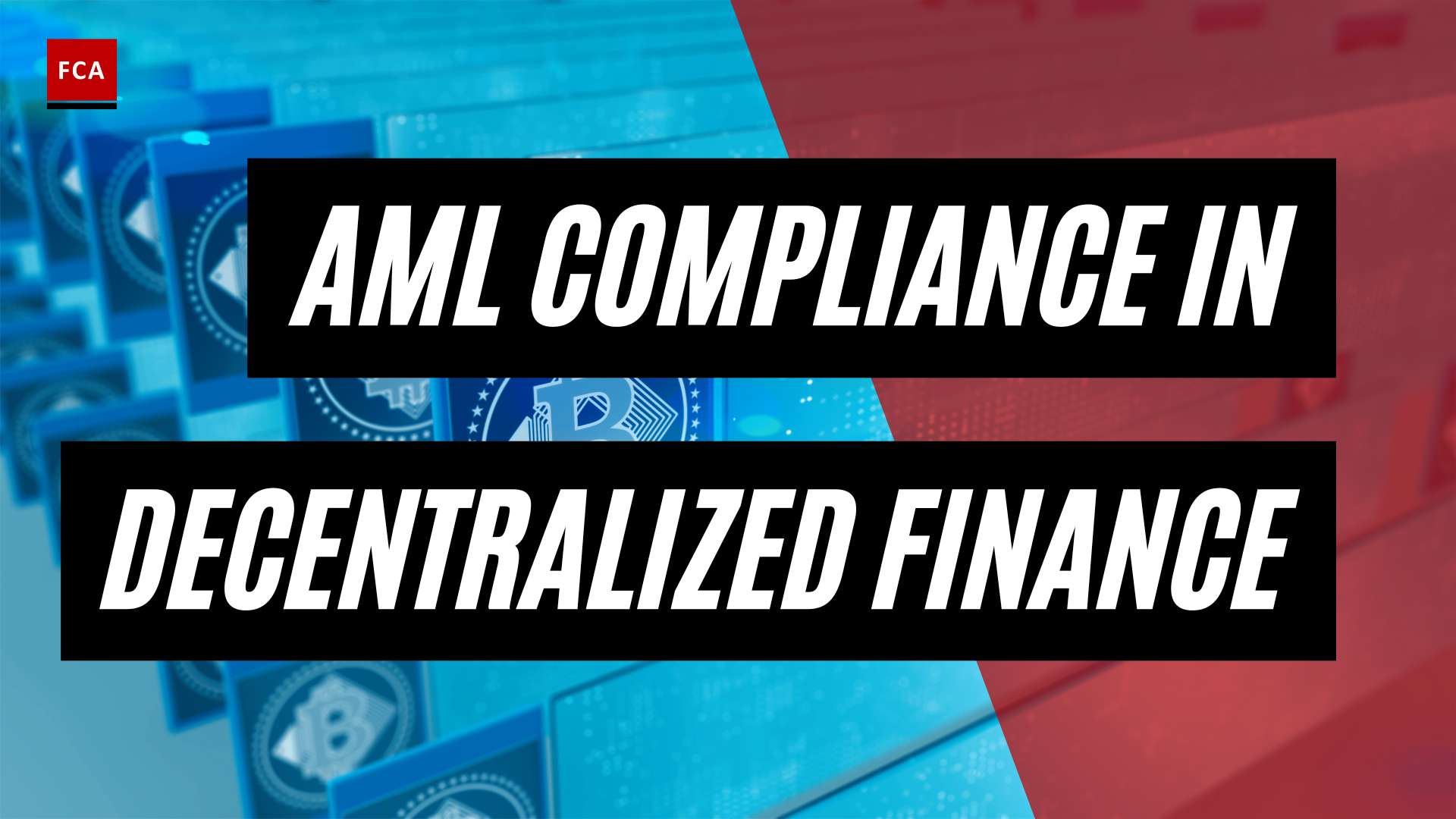Money Laundering Through Trade: An Overview
Money laundering through trade is a sophisticated method used to disguise illicit funds by manipulating trade transactions. It involves the misrepresentation of the price, quantity, quality, or country of origin of goods and services, enabling criminals to evade taxes, customs duties, and fees, as well as conceal illicit activities such as drug trafficking, terrorism, and other crimes (U.S. Department of the Treasury).
Understanding Trade-Based Money Laundering
Trade-based money laundering encompasses a variety of techniques, ranging from classic over-invoicing and under-invoicing of goods and services to more sophisticated schemes involving false financial documents and the misuse of transshipment trade routes (U.S. Department of the Treasury). Criminals exploit the complexity of trade transactions to move illicit funds across borders while giving the appearance of legitimate trade.
Unlike traditional forms of money laundering that primarily rely on the financial sector, trade-based money laundering poses unique challenges. Due to the involvement of legitimate goods and services, detecting these illicit activities becomes more complex. Law enforcement agencies and financial institutions must enhance their due diligence procedures to identify and combat trade-based money laundering (U.S. Department of the Treasury).
Risks and Implications of Trade-Based Money Laundering
The risks associated with trade-based money laundering are significant. Not only does it facilitate the movement of illicit funds, but it also undermines the integrity of global trade systems, distorts competition, and hampers economic development. Criminal organizations exploit the vulnerabilities within trade transactions to fund their illegal activities, posing a threat to the stability and security of the financial system.
Trade-based money laundering can have far-reaching implications. It enables the financing of terrorism, drug trafficking, arms smuggling, and other illicit activities. Additionally, it erodes trust in financial institutions and hinders efforts to combat money laundering and terrorist financing.
To address the challenges posed by trade-based money laundering, regulators, financial institutions, and law enforcement agencies are focusing on enhancing anti-money laundering (AML) and combating the financing of terrorism (CFT) frameworks. Implementing risk-based approaches, conducting thorough customer due diligence, and leveraging technology solutions are crucial steps in mitigating the risks associated with money laundering through trade (Bank for International Settlements). By enhancing transparency, collaboration, and information sharing among stakeholders, the fight against trade-based money laundering can be strengthened.
In the following sections, we will delve deeper into the techniques used in trade-based money laundering, red flags and indicators to watch for, and the role of different entities in combating this global challenge.
Techniques Used in Trade-Based Money Laundering
Trade-based money laundering involves a range of techniques that facilitate illicit activities and the movement of funds across borders. Understanding these techniques is crucial in detecting and preventing trade-based money laundering. In this section, we will explore three common techniques used in trade-based money laundering: over-invoicing and under-invoicing, misclassification of goods, and false shipping documents.
Over-Invoicing and Under-Invoicing
One of the most prevalent techniques in trade-based money laundering is the manipulation of invoices through over-invoicing and under-invoicing. In this scheme, criminals deliberately misrepresent the price, quantity, quality, or terms of a commodity in trade transactions (Financial Crime Academy).
Over-invoicing involves inflating the value of goods or services beyond their true worth. By overestimating the price, criminals can move funds across borders, creating the appearance of legitimate trade while actually transferring illicit funds. This technique allows them to evade taxes, avoid customs duties, and generate illicit profits.
Under-invoicing, on the other hand, involves deliberately undervaluing goods or services. By underestimating the price, criminals can move funds out of a country or evade taxes, ultimately disguising the true value of the trade transaction. Under-invoicing can also be used to exploit preferential trade agreements or take advantage of exchange rate differences.
Misclassification of Goods
The misclassification of goods is another technique frequently used in trade-based money laundering. Criminals manipulate the classification codes assigned to goods, intentionally misrepresenting the nature, quantity, or quality of the items being traded. This misclassification allows them to exploit differences in tariff rates, duty exemptions, or regulatory requirements.
By misclassifying goods, criminals can benefit from lower tariffs or even qualify for duty-free treatment, reducing costs and increasing profits. Moreover, misclassification can help disguise the true nature of the goods being traded, making it harder for authorities to identify suspicious activities.
False Shipping Documents
False shipping documents play a significant role in trade-based money laundering schemes. Criminals create fraudulent documents, such as bills of lading, invoices, or packing lists, to misrepresent the origin, destination, or value of goods being traded. These falsified documents provide a veneer of legitimacy to illicit transactions, making it difficult for authorities to detect the underlying money laundering activities.
For instance, criminals may create multiple sets of shipping documents, each with different values or details, to deceive customs officials and conceal the true nature of the trade transaction. By manipulating shipping documents, criminals can artificially inflate or understate the value of goods, facilitating the movement of illicit funds across borders without raising suspicion.
Understanding these techniques is crucial for financial institutions, regulatory bodies, and law enforcement agencies in their efforts to combat trade-based money laundering. By recognizing the red flags associated with these techniques, authorities can enhance their ability to detect and investigate suspicious trade transactions.
In the next section, we will explore the red flags and indicators of trade-based money laundering, providing further insights into identifying potential money laundering activities within trade transactions.
Red Flags and Indicators of Trade-Based Money Laundering
Detecting trade-based money laundering (TBML) requires a keen eye for certain red flags and indicators. Financial institutions, governments, and other organizations must be vigilant in identifying suspicious trade activities. Here are some common indicators of trade-based money laundering to watch out for:
Unusual Trade Volume or Frequency
Significant fluctuations in trade volume or an unusually high frequency of transactions can be an indicator of potential money laundering. Sudden increases or decreases in trade activity that are inconsistent with industry trends or business patterns may suggest illicit activity. Monitoring trade volume and frequency can help identify abnormal trade patterns that warrant further investigation.
Blacklisted Entities and Discrepancies in Trade Documents
Checking the list of blacklisted entities is crucial in detecting trade-based money laundering. If a party involved in a trade transaction is on a sanctions list or known to have ties to illicit activities, it raises suspicions. Discrepancies in trade documents, such as inconsistent product descriptions, pricing, or shipping details, may also indicate attempts to conceal the true nature of the transaction.
Suspicious Trade Patterns and Transactions
Certain trade patterns and transactions can raise red flags for potential money laundering. For example, repetitive transactions involving the same counterparties without a clear business rationale may indicate attempts to layer or disguise illicit funds. Unusual trade routes, especially those involving high-risk jurisdictions, may also warrant closer scrutiny. Monitoring and analyzing these trade patterns can help identify suspicious activities.
It is important to note that these indicators should not be considered conclusive evidence of trade-based money laundering on their own. They serve as warning signs that require further investigation and analysis. Financial institutions and compliance professionals should implement robust monitoring systems and protocols to identify and report any suspicious trade activities.
For a deeper understanding of trade-based money laundering techniques, case studies, and statistics, explore our articles on trade-based money laundering typologies, trade-based money laundering case studies, and trade-based money laundering statistics.
Combating Trade-Based Money Laundering
To effectively combat trade-based money laundering, the collaboration of various stakeholders is crucial. Financial institutions and banks, in particular, play a significant role in implementing measures to detect and prevent illicit activities. Additionally, collaboration and information sharing among institutions, as well as the use of technology solutions, are key components in the fight against trade-based money laundering.
Role of Financial Institutions and Banks
Banks and financial institutions have a vital role to play in combating trade-based money laundering. They are responsible for implementing rigorous due diligence procedures, monitoring trade finance transactions, and conducting risk assessments to identify potential money laundering activities. By thoroughly assessing the parties involved in trade transactions, banks can detect suspicious patterns and transactions that may indicate illicit financial activities.
To effectively combat trade-based money laundering, financial institutions should:
-
Conduct customer due diligence: Thoroughly verifying the identities of customers involved in trade transactions is essential. This includes conducting enhanced due diligence for high-risk customers and implementing ongoing monitoring to detect any unusual activities.
-
Screen transactions: Implementing robust transaction screening processes helps identify any suspicious transactions that may be related to trade-based money laundering. Advanced technology solutions can aid in automating the screening process and flagging potential risks.
-
Implement risk-based approaches: Adopting risk-based approaches allows financial institutions to allocate resources efficiently by focusing on higher-risk trade transactions and customers. This enables them to prioritize their efforts in combating trade-based money laundering effectively.
Collaboration and Information Sharing
A collaborative approach is essential for effectively combating trade-based money laundering. Financial institutions, customs authorities, law enforcement agencies, and other stakeholders should work together to enhance information sharing and risk management practices. By sharing intelligence and collaborating on investigations, these entities can identify and prevent the misuse of trade transactions for illicit purposes.
Key aspects of collaboration and information sharing include:
-
Sharing suspicious activity reports (SARs): Financial institutions should report any suspicious activity related to trade transactions to the relevant authorities. This information can help identify money laundering networks and patterns.
-
Cooperation with law enforcement agencies: Financial institutions should actively cooperate with law enforcement agencies to provide information and evidence required for investigations. Timely sharing of information can lead to the identification and prosecution of individuals involved in trade-based money laundering.
Technology Solutions for Detection and Prevention
Leveraging technology solutions is crucial in the fight against trade-based money laundering. Financial institutions can utilize advanced software and algorithms to analyze trade finance transactions, detect patterns, and identify potential red flags. These solutions aid in automating transaction monitoring, improving accuracy, and reducing the risk of human error.
Some technology solutions used for detection and prevention include:
-
Transaction screening software: Advanced transaction screening tools analyze trade transactions and compare them against known money laundering typologies and indicators. These solutions help identify suspicious patterns and highlight potential risks.
-
Artificial intelligence (AI) and machine learning: AI-powered systems can learn from historical data, enabling them to detect complex trade-based money laundering schemes. By continuously analyzing patterns and adapting to evolving risks, these systems improve detection accuracy.
-
Data analytics: Utilizing data analytics techniques allows financial institutions to identify anomalies and trends in trade transactions. This helps in identifying potential money laundering activities and improving overall risk management.
By leveraging technology solutions, financial institutions can enhance their ability to detect and prevent trade-based money laundering. These tools aid in improving efficiency, accuracy, and the overall effectiveness of anti-money laundering efforts.
Trade-based money laundering poses a significant threat to the global financial system. By actively involving financial institutions, promoting collaboration and information sharing, and utilizing technology solutions, stakeholders can work together to mitigate the risks associated with illicit financial activities conducted through trade.
Global Perspectives on Trade-Based Money Laundering
Trade-based money laundering is a significant concern on a global scale, with various industries and regions being vulnerable to this illicit activity. Understanding the high-risk industries, regional variances in anti-money laundering and counter-terrorist financing (AML/CFT) frameworks, and the identification of major money laundering countries is crucial in combating trade-based money laundering.
High-Risk Industries and Vulnerable Sectors
Certain industries are more susceptible to being exploited for money laundering purposes. Financial institutions, such as banks, currency exchange houses, and payment processing companies, are considered high-risk due to the volume and nature of their transactions. Additionally, industries involved in the sale of real estate, cars, boats, and branches located in high-risk countries are also vulnerable to money laundering activities (sanctions.io). Businesses that primarily deal with cash payments, politically exposed persons (PEPs), and customers exhibiting unusual behaviors, such as inconsistent spending levels or multiple unexplained accounts, pose a heightened risk as well (sanctions.io). Sectors that handle a large volume of electronic payments or provide services like electronic banking and online account opening are indicative of illegal activities and pose a higher risk of money laundering and terrorist financing (sanctions.io). Additionally, businesses that deliver services virtually without meeting clients in person, such as remote banking and payment services, currency exchanges, and real estate transactions where the buyer is absent, are at a higher risk of being used for money laundering and terrorist financing (sanctions.io).
Regional Variances in AML/CFT Frameworks
The AML/CFT frameworks can vary across different regions, resulting in varying levels of effectiveness in combating trade-based money laundering. International governing bodies like the Financial Action Task Force (FATF) play a crucial role in setting global standards and guidelines. However, the implementation and enforcement of these standards can differ among countries and regions. The effectiveness of AML/CFT frameworks in addressing trade-based money laundering depends on factors such as regulatory oversight, cooperation between authorities, and the availability of resources for enforcement and supervision. Regional variances in AML/CFT frameworks can create challenges in detecting and preventing trade-based money laundering, as criminals may exploit jurisdictions with weaker controls and oversight.
Basel AML Index and Major Money Laundering Countries
The Basel AML Index is a tool that assesses the risk of money laundering and terrorist financing across countries. It considers various factors such as the quality of AML/CFT frameworks, corruption levels, financial transparency, and political stability. The index can help identify major money laundering countries by highlighting areas with higher risks and vulnerabilities. By understanding the countries with significant challenges in combating money laundering, authorities and financial institutions can focus their efforts on strengthening AML/CFT measures and enhancing cooperation to mitigate the risks associated with trade-based money laundering.
To effectively combat trade-based money laundering, it is essential for authorities, financial institutions, and businesses to be aware of the high-risk industries, regional variances in AML/CFT frameworks, and major money laundering countries. By identifying and addressing these vulnerabilities, stakeholders can work together to strengthen their defenses against trade-based money laundering and protect the integrity of the global financial system.
Role of Customs Authorities in Detecting Trade-Based Money Laundering
Customs authorities play a crucial role in combating trade-based money laundering by actively monitoring and examining trade documents and transactions. Through their oversight and enforcement capabilities, customs authorities can detect discrepancies and suspicious activities that may indicate money laundering.
Examination of Trade Documents and Monitoring Transactions
One of the primary responsibilities of customs authorities is to examine trade documents, including invoices, bills of lading, and customs declarations. These documents provide valuable information about the nature and value of goods being imported or exported. By carefully scrutinizing these documents, customs authorities can identify red flags and indicators of potential money laundering.
Some of the key elements that customs authorities focus on during document examination include:
-
Over-Invoicing and Under-Invoicing: Customs authorities look for instances where the declared value of goods does not align with their actual market value. Over-invoicing (declaring a higher value) and under-invoicing (declaring a lower value) are common techniques used in trade-based money laundering to manipulate the movement of funds across borders. By identifying such discrepancies, customs authorities can initiate further investigations.
-
Misclassification of Goods: Another technique employed in trade-based money laundering is the misclassification of goods. Criminals may intentionally mislabel goods to take advantage of lower tariffs or to hide the true nature of the products being traded. Customs authorities carefully scrutinize the declared classification of goods against their actual characteristics to uncover any attempts at money laundering.
-
False Shipping Documents: Falsifying shipping documents, such as bills of lading or certificates of origin, is a tactic used to obscure the true origin, destination, or value of traded goods. By verifying the authenticity and accuracy of shipping documents, customs authorities can uncover attempts to launder money through trade transactions.
Challenges and Strategies for Customs Authorities
While customs authorities play a vital role in combating trade-based money laundering, they face several challenges in effectively detecting and preventing these illicit activities. Some of the challenges include:
-
Limited Resources and Capacity: Customs authorities often have limited resources and capacity to thoroughly examine every trade transaction. The large volume of international trade makes it challenging to identify and investigate all potential cases of money laundering. Prioritizing high-risk transactions and leveraging technology can help customs authorities allocate their resources more effectively.
-
Sophisticated Money Laundering Techniques: Criminals continually evolve their money laundering techniques to stay ahead of detection efforts. They may employ complex schemes, utilize multiple intermediaries, or exploit gaps in regulatory frameworks. Customs authorities must stay informed about emerging trends and collaborate with other agencies and international counterparts to develop effective strategies.
-
Collaboration and Information Sharing: Trade-based money laundering often involves multiple jurisdictions, making international cooperation essential. Customs authorities need to strengthen collaboration with other law enforcement agencies, financial institutions, and international organizations to share information, intelligence, and best practices. This collaborative approach enhances the ability to detect and disrupt money laundering networks.
By addressing these challenges and implementing robust strategies, customs authorities can strengthen their role in detecting and preventing trade-based money laundering. Their efforts contribute to the overall global fight against money laundering, protecting the integrity of international trade and financial systems.
The Complexity of Trade-Based Money Laundering
Trade-based money laundering is a sophisticated method used by criminals to disguise the origins of illicit funds and integrate them into the financial system through legitimate trade transactions. The complexity of this illicit activity poses significant challenges for financial institutions, businesses, and regulators. Let’s explore some key aspects that contribute to the complexity of trade-based money laundering.
Global Supply Chains and Multiple Intermediaries
One of the factors contributing to the complexity of trade-based money laundering is the involvement of global supply chains and multiple intermediaries. International trade transactions often span across various countries, involving numerous parties such as banks, traders, insurers, and customs officials. The complexity of these transactions creates opportunities for illicit actors to exploit financial loopholes and disguise the origins of illicit funds (Bank for International Settlements).
Within this intricate web of supply chains and intermediaries, criminals can manipulate trade invoices, shipping documents, and financial instruments to facilitate the movement of illicit funds. By over- or under-invoicing goods, using multiple invoicing techniques, or providing false descriptions of goods, they can obscure the true value of the transactions and launder money through seemingly legitimate trade activities.
Regulatory Oversight and Due Diligence
Another aspect of the complexity of trade-based money laundering lies in the regulatory oversight and due diligence challenges faced by financial institutions and businesses. Trade transactions involve compliance with various international trade regulations, financial regulations, and anti-money laundering (AML) regulations. Navigating through these regulations and ensuring compliance can be a daunting task, particularly considering the global nature of trade.
Financial institutions and businesses must establish robust due diligence procedures to identify and mitigate the risks associated with trade-based money laundering. This includes conducting enhanced due diligence on high-risk customers, implementing transaction monitoring systems, and training staff to recognize potential red flags and indicators of trade-based money laundering.
Enhancing Transparency and Collaboration
Enhancing transparency and collaboration among stakeholders is crucial in combating trade-based money laundering. Effective coordination and information sharing between financial institutions, businesses, regulators, and law enforcement agencies are essential to detect and prevent illicit activities.
Stakeholders should share information about suspicious trade patterns, entities involved in trade-based money laundering, and emerging typologies. Collaborative efforts can help identify vulnerabilities in the trade system, improve risk assessment methodologies, and develop effective countermeasures.
Leveraging technology solutions, such as data analytics and artificial intelligence, can also enhance the detection and prevention of trade-based money laundering. These advanced tools can analyze vast amounts of trade data, identify patterns, and flag potential money laundering activities.
By addressing the complexity of trade-based money laundering through enhanced transparency, collaboration, and technological advancements, stakeholders can strengthen the global AML/CFT (Combating the Financing of Terrorism) frameworks and protect the integrity of the financial system.
For a comprehensive understanding of trade-based money laundering, including its techniques, red flags, and global perspectives, explore the other sections of this article.
Trade-Based Money Laundering as a Global Challenge
Trade-based money laundering poses a significant challenge to the global financial system, with far-reaching implications. This method of money laundering involves the exploitation of international trade transactions to disguise the origins of illicit funds and move them across borders undetected. The impact of trade-based money laundering can be seen in various aspects, including its effect on the financial system, its connection to illegal activities and financing of terrorism, and the need for strengthening anti-money laundering and counter-terrorism financing (AML/CFT) frameworks.
Impact on the Financial System
Money launderers exploit gaps in regulatory oversight, inadequate due diligence, complex supply chains, and lack of transparency in trade finance to conduct illicit financial transactions through trade-based money laundering schemes. The complexity of international trade transactions creates opportunities for illicit actors to infiltrate the financial system, potentially leading to reputational damage for financial institutions and undermining the integrity of global markets (Financial Crime Academy). The involvement of multiple parties, including banks, traders, insurers, and customs officials, further complicates the detection and prevention of trade-based money laundering (Bank for International Settlements).
Illegal Activities and Financing of Terrorism
Trade-based money laundering is not limited to financial fraud; it is also connected to a wide range of illegal activities. Criminals exploit the complexity of trade transactions to finance drug trafficking, arms smuggling, human trafficking, and even terrorism. The funds generated through trade-based money laundering can provide financial support for these illicit activities, posing a threat to global security and stability. Governments, financial institutions, and international organizations are taking steps to combat trade-based money laundering by increasing transparency in international trade, strengthening anti-money laundering regulations, and improving cross-border cooperation among law enforcement agencies (Sanction Scanner).
Strengthening AML/CFT Frameworks
To address the challenges posed by trade-based money laundering, there is a need to strengthen AML/CFT frameworks globally. Regulatory bodies, financial institutions, and other relevant organizations are focusing on enhancing AML/CFT measures, implementing risk-based approaches, conducting thorough customer due diligence, and leveraging technology solutions to detect and prevent money laundering through trade. These efforts include increasing transparency in trade finance, implementing stricter regulations, sharing information and intelligence, and enhancing collaboration among stakeholders (Bank for International Settlements). Strengthening AML/CFT frameworks is crucial to mitigate the risks associated with trade-based money laundering and protect the integrity of the global financial system.
To effectively combat trade-based money laundering, it is essential to address the vulnerabilities in the trade system, enhance regulatory oversight, and promote transparency and collaboration among all stakeholders involved in international trade. By adopting robust AML/CFT measures and employing advanced technologies, financial institutions, governments, and regulatory bodies can work together to combat the global challenge of trade-based money laundering and safeguard the integrity of the global financial system.









